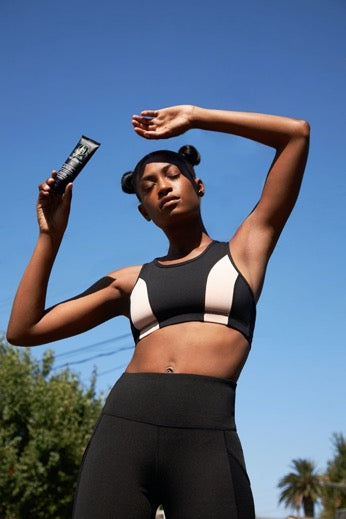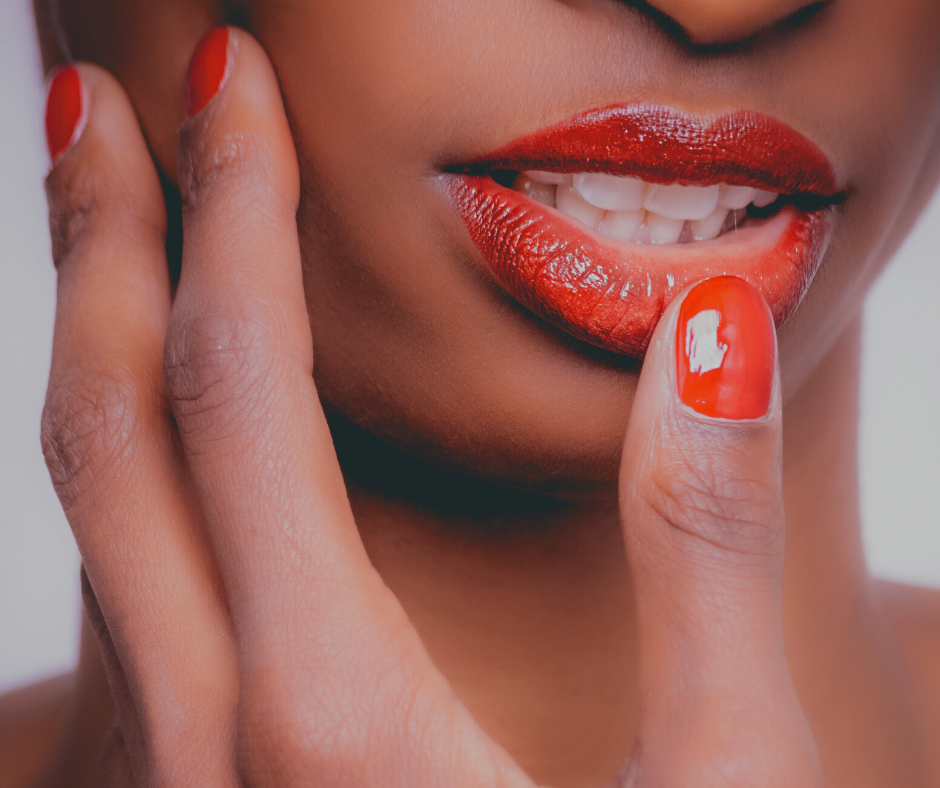EASY STEPS TO CONTOUR YOUR FACE

For most, mastering the art of contouring can seem challenging and time consuming. However! With the right education and tools, learning how to sculpt your face can be a quick and easy process. A big part of the mystery behind contouring comes from shade matching and application, especially for different skin tones and face shapes. That’s why we at Melanin Factory, teamed up with some of our favorite beauty brands to break down the science of contouring for your unique-self. Read on to learn the ins and outs of contouring, and be on your way to creating the perfect v-shaped look.
Terms to Know
The terminology behind contouring can seem like a foreign language if you’re not familiar with the makeup trend. Whether you’re referring to dark tones, light tones, product placement, or tools, each facet of contouring has a different name and meaning. Below we’ve provided a glossary to best help you learn how to sculpt your face with ease.
● Contour: a technique for shaping the face with a slightly darker shade of makeup (liquid
or powder). This technique looks at utilizing the natural shadows of the face to enhance and create a more defined and chiseled facial structure.
● Highlight: the opposite of contour, highlighting uses a lighter shade of makeup (liquid or
powder) to enhance natural highpoints of the face.
● Sculpt: another word for the art of contour. You may notice makeup artists and publications use these words interchangeably. More specifically, the term ‘sculpt’ refers to the act of contouring and highlighting together.
● Contour Brush: an angular brush that is designed to fit the hollow under your cheekbone to create the perfect v-shaped look.
● Fan Brush: used for highlighting, the fan brush looks as described, a feathered half circular brush. This brush is great for applying highlights to the tops of cheeks, bridge of nose, and cupid’s bow.
● Beauty Blender: when using liquid formula to contour or highlight, a beauty blender is
the perfect tool to evenly blend light and dark shades into your skin. This helps remove harsh lines and create an even complexion.
● T-Zone: refers to the part of the face that moves from the tip of the nose, up to opposite
ends of the forehead (creating a natural t-shape on the face).
● Cupid’s Bow: the natural dip on the top of our upper lip.
Picking Your Shade
When learning how to sculpt your face, it’s best to start off by selecting the proper shade of
highlighter and contour. In addition to figuring out your skin’s overall tone when it comes to
shade matching, it’s also important to know your skin’s undertone.
For Contour
There are a few important factors to keep in mind when choosing the contour for your skin. First, specify the occasion. Is this a natural, day-time look? If so, you’ll want to go one-shade darker than your skin tone. Is this for photographs or an evening look? Then you’ll look to explore going two-shades darker than your skin tone.
Additionally, you’ll want to look out for your undertone: cool, warm, or neutral. Regardless of going one or two shades darker than your skin tone, you’ll always want to stay within your undertone category.
Some examples include:
● Vera Moore Cosmetics
● AJ Crimson
● Maréna Beauté
For Highlight
There are a few considerations to keep in mind when picking the perfect highlight for your skin tone. First, whether you want a subtle matte highlight, or a shimmer highlight finish. If opting for matte, just like contour, you’ll want to explore lighter foundation or powder shades (roughly one to two shades lighter than your natural skin tone) to use as a highlight. If looking to go for a shimmer finish, you’ll want to pick a designated highlighter that works best for your skin tone.
● Fair Skin – a pink or pearlescent shade
● Medium Skin – a golden beige, champagne shade
● Dark Skin – a bronzed or rose gold shade
Creating A Clean Canvas
Just like painting a picture, a prepped canvas creates a beautiful and lasting work of art. The same can be said for our makeup look and prepping the skin for makeup application.
● Exfoliate: regular exfoliation (2-3 times a week), removes any dead skin and creates a
smooth complexion. This will help create an even application when applying contour and
highlight.
● Moisturize: when we moisturize before applying makeup (like contour and highlighter), it
can help the skin absorb product properly and maintain your look for a longer period of
time. Additionally, moisturizing the skin before makeup application can remove existing
dullness from our face and help create a lit-from-within glow. Try Âme Skincare’s Daily
Moisturizing Soufflé w/ Niacinamide.
Contouring for Face Shape
Your skin is prepped, you’ve discovered your shade, and are well versed on the lingo – now it’s time to learn where to apply these products to your skin! We’ve broken down the four types of facial profiles, and how to sculpt your face depending upon whether you have an: oval, round, square, or heart shaped face.
Keep in mind, no matter the shape of your face, keep strokes and movements upwards working from the middle of your face out. This helps create the appearance of a lifted, v-shaped face.
Oval
– Contour Application
● Right underneath your cheekbone, working mid-cheek to your upper ear
*to find the hollow of your cheeks, create a puckered/kiss face to see your natural
indents.
● On both outward edges of the nose bridge
Round
– Contour Application
● Right underneath your cheekbone, working mid-cheek to your upper ear
*to find the hollow of your cheeks, create a puckered/kiss face to see your natural indents.
● On both outward edges of the nose bridge
● Long narrow lines from the top of the ear to your hair part (working along the hairline)
● From the middle of the jaw (following the jaw line) to the bottom of your ear lobe Square
– Contour Application
● Right underneath your cheekbone, working mid-cheek to your upper ear
*to find the hollow of your cheeks, create a puckered/kiss face to see your natural indents.
● On both outward edges of the nose bridge
● Along your hairline (from 1-2 and 10-11 *clockwise) create a kitty corner line between
the two points and fill in half an inch
*work product upward blending into the hairline for a natural look
● From the middle of the jaw (following the jaw line) to the bottom of your ear lobe Heart
– Contour Application
● Right underneath your cheekbone, working mid-cheek to your upper ear
*to find the hollow of your cheeks, create a puckered/kiss face to see your natural
indents.
● On both outward edges of the nose bridge
● Long narrow lines from the top of the ear to your hair part (working along the hairline)
Highlight Application For All
● Tip of chin
● Along the cheekbone
● Bridge of nose (down the middle)
● Cupid bow
● Triangle on forehead, with point starting in between the eyes
Now that you’re fully up-to-date on the terminology, what products to use – and where to use them, you officially know how to sculpt your face! To look into adding contour friendly products to your makeup bag, check out all the amazing products offered by the Melanin Factory and our partnering brands.
By: Elizabeth Blasi




Comments